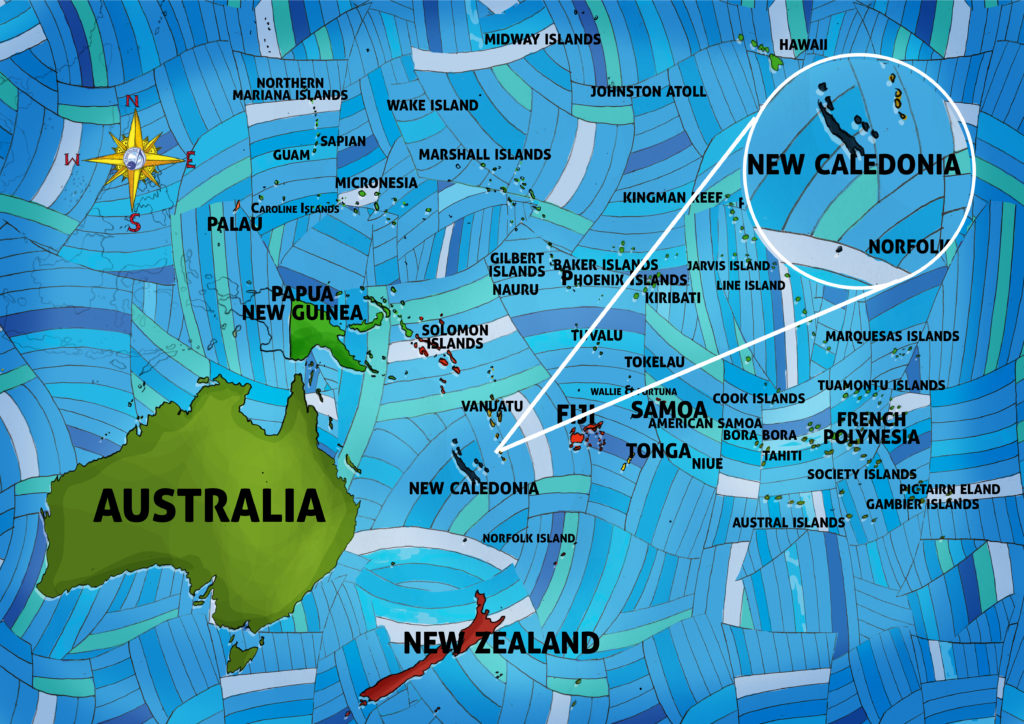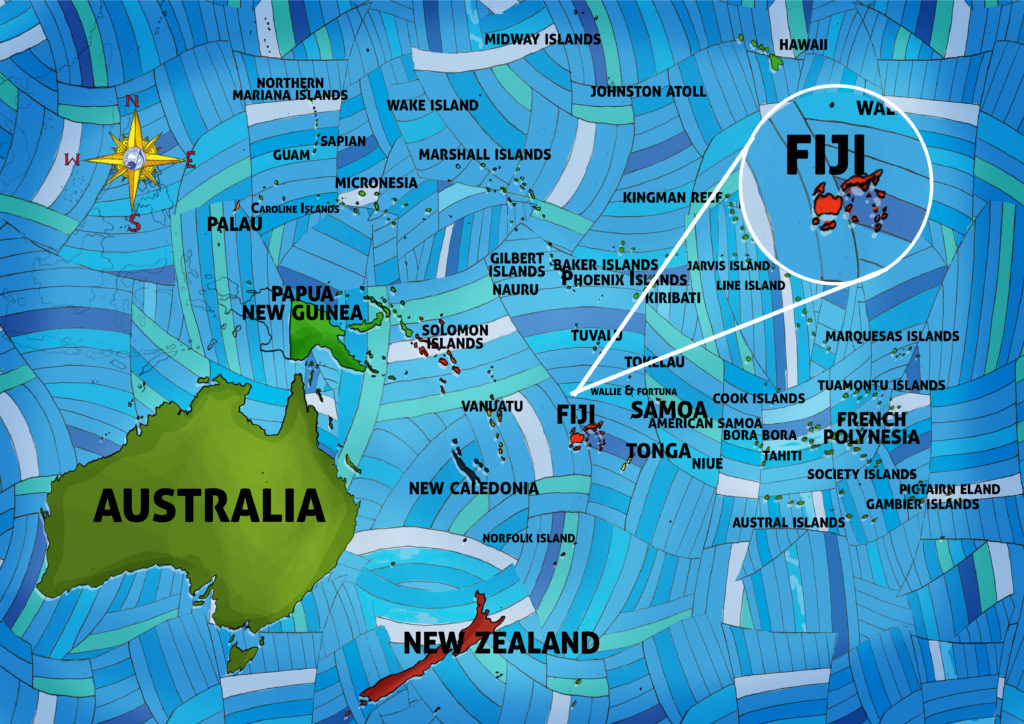
This week in our online classes we visit the Melanesian island nation of New Caledonia. Also known as Kanaky, New Caledonia is, in many ways, a very surprising place. Nicknamed “Le Caillou (The Stone),” the surface of this Melanesian archipelago’s main island, Grand Terre, is essentially composed of nickel, chromium, magnesium, and manganese, a mix that should be toxic to plants. In New Caledonia, it’s not. In New Caledonia, plants that should not technically be able to survive have developed specific mechanisms that allow them to cope with, even to thrive in, such harsh conditions. Looking at the history of New Caledonia, one may say the same about the island nation’s indigenous Kanak people. French colonization of New Caledonia was harsh. There was economic and physical exploitation, there was apartheid-like segregation and forced relocation to Kanak-only reservations…at many turns Kanak population could easily have disappeared. The fact that today the Kanaks are the main political force in potentially-soon-to-be-independent New Caledonia is a testament to their unique survival instinct.
Tag Archives | Melanesia
Fiji Strings Us Along
The term “Melanesian music,” used in the broadest sense, covers a wide range of traditional styles ranging from the multiple genres of tribal songs found in Papua New Guinean singsings to Australia’s Aboriginal didgeridoo drones, from Solomon Islanders’ polyphonic pan pipes to Fijian lali drumming. Melanesians have long used a variety of slit-log gongs, flutes and bamboo pipes in their music but only recently, with the arrival of the Europeans, have they added stringed instruments like guitars and ukeleles into the mix. For example, Fijian music blends Melanesian and Polynesian forms and embraces multi-part harmony. Fijian string bands, like the Shefa boys seen rehearsing in this video, are groups of three or more performers playing guitar/ukelele/mandolin and singing in sweet multi-part harmony.
Greetings Malaysia from Fiji
“Bula Maleya” may well be Fiji’s favorite song. It originated with Fijian soldiers who fought, as members of the British Commonwealth, in the British military campaign to fight the Japanese in Malaysia (then Maleya) during World War II. During the battles Fijian and Malayan soldiers became friendly and wrote this song to mark their cooperation. Today’s Fijians have adopted “Bula Maleya” as a welcome song, singing it readily to greet tourists arriving on the islands.
We Meet Fiji
This week in our online class for kids we visit the Melanesian nation of Fiji.. There is disagreement among historians and archaeologists as to exactly when humans came to Fiji, though the general consensus is that people had arrived in the islands by about 1,500 B.C. There is agreement that two distinct groups settled Fiji; Melanesians, dark-skinned settlers who arrived in Fiji by way of Vanuatu, New Caledonia and the Solomon Islands, and lighter-skinned Lapita people, skilled navigators and fishers from New Caledonia who had originated in Southeast Asia’s Malay Peninsula. Later, the Lapita people left Fiji for islands further east, seeding the Polynesian islands like Tonga and Samoa. This left Fiji primarily to the Melanesians.
Whoever settled the place and when, today most Fijians live on the two main islands, Vanua Levu and Viti Levu; because Viti Levu’s interior is rugged most Fijians who call the island home live in the surprisingly urban Suva.


